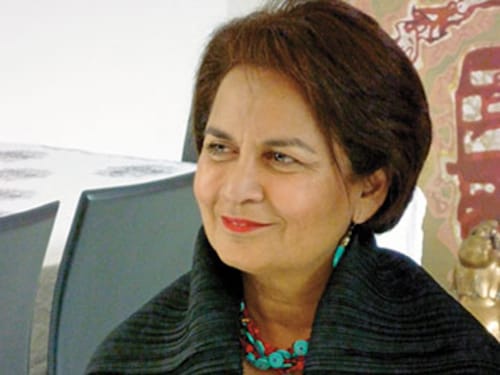Buying Art is a Privilege: Lekha Poddar
One of india's best known art collectors, Lekha Poddar, is the head of the jury for the first edition of the Forbes India Art Awards (FIAA) to be held in January. She talks to Udit Misra about art bei


Q. In India, do enough people consider art an investment option?
I don’t think investment should be the only purpose of buying art. Art is a creative process which must appeal to one’s aesthetics and intellect. However, when the Indian contemporary art market was booming between 2004 and 2008, it was considered an investment tool, which was one of the reasons why the prices went up so fast. Because of this, a world market for Indian art didn’t get established. People were unfamiliar with the art and the price [point] to enter this market was too high. Hence, a collector base wasn’t created.
Q. Investment in art is often considered an exclusive preserve of the rich. But is the middle class showing interest in such investments?
People start to buy art once they have all their essential needs satisfied. Buying art is a privilege. From time immemorial, acquiring art has been the prerogative of the upper echelons of society. However, today [it] is no longer restricted to a few. The middle class is educated and have an interest in art. But to do it diligently, they must do some research go to gallery shows, read catalogues. They can buy works of upcoming artists, who are reasonably priced.
Q. How does the Indian art market differ from the more established ones in the West?
Generally as people grow wealthy, the privileged start to buy art. In India, unfortunately, there are very few serious collectors. The problem is that our educational system does not focus on our culture, traditions, history or art. Today, popular entertainment and sports have become the focus of our culture. Until that changes, I wonder how our society will grow.
Q. You’re heading the jury for FIAA. What do these awards aim to achieve?
Most of the government’s cultural institutions are defunct. Look at the plight of our monuments, archeological sites and museums. The National Gallery of Modern Art (New Delhi, Mumbai, and Bangalore) has hardly any collection of modern Indian art. Major collections of Indian art are in private hands. Few of us, collectors, like Kiran Nadar and I [Devi Art Foundation], have made our collections public. We mount world class exhibitions without any sponsorship or government help. But the footfalls are negligible. And these institutions are recognised worldwide but not in our own country. I hope, with FIAA, the business world comes out in support of Indian contemporary art. In the world over, businesses use art as a soft power. It is our collective duty to educate and empower the next generation with the knowledge of our art, rich heritage and civilisation.
The Forbes India Art Awards
Over the years, Forbes India has written on the business of art, investments in the segment, art entrepreneurship and art funds. ForbesLife India launched in 2011 with a showcase of the works of eminent Indian artists like VS Gaitonde, NS Bendre, J Swaminathan, Tyeb Mehta, MF Husain and SH Raza. As more and more contemporary Indian artists are being lauded internationally, we bring you the Forbes India Art Awards that seek to recognise artists of yore as well as the people and organisations furthering the business of art in the country.
First Published: Jan 10, 2014, 06:36
Subscribe Now